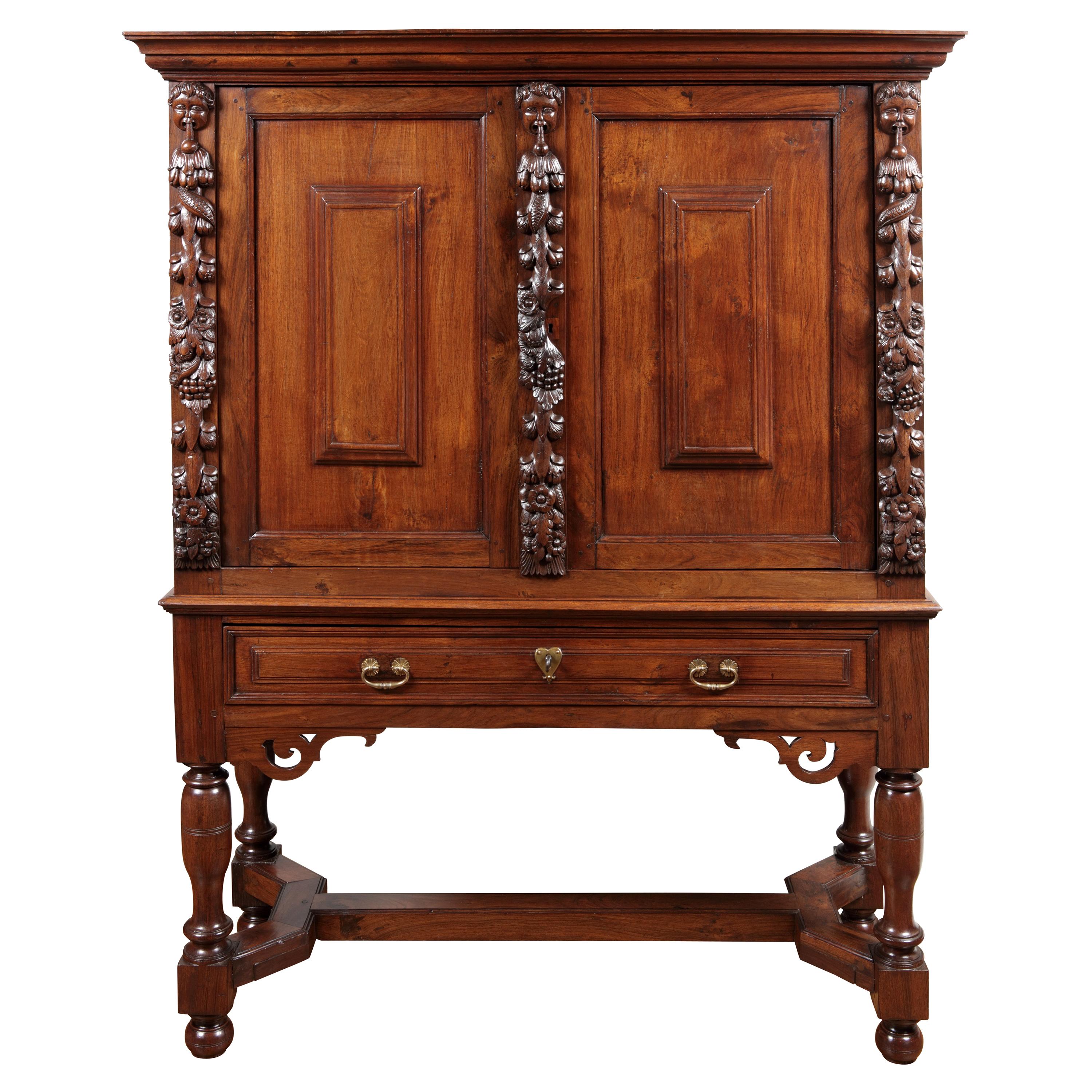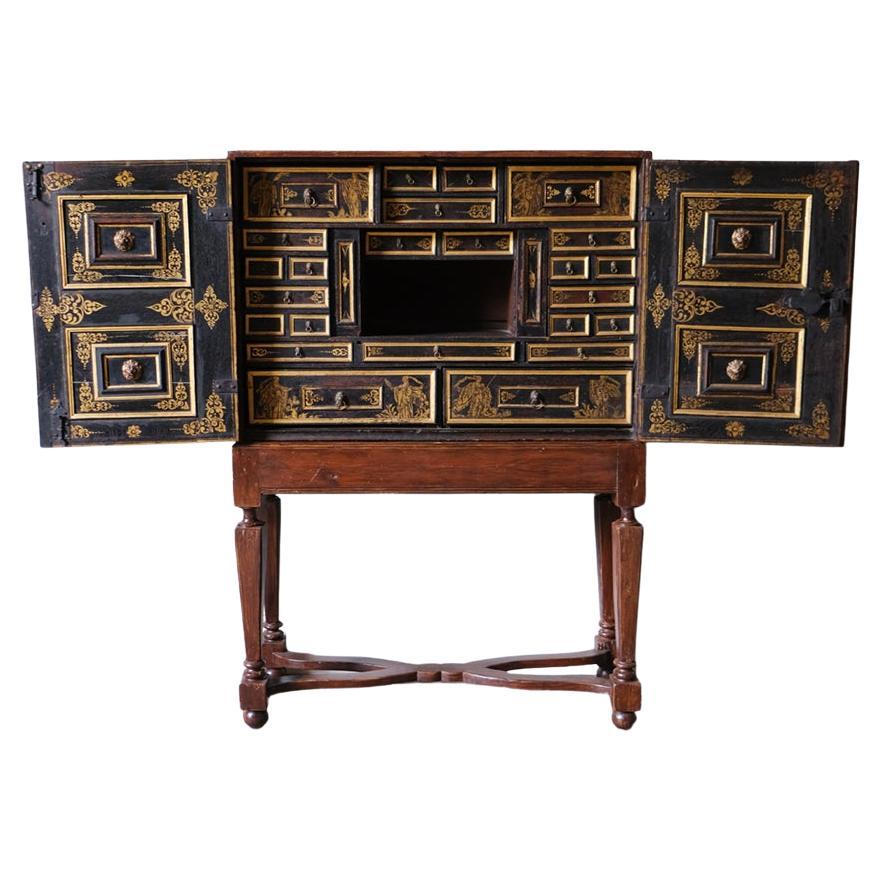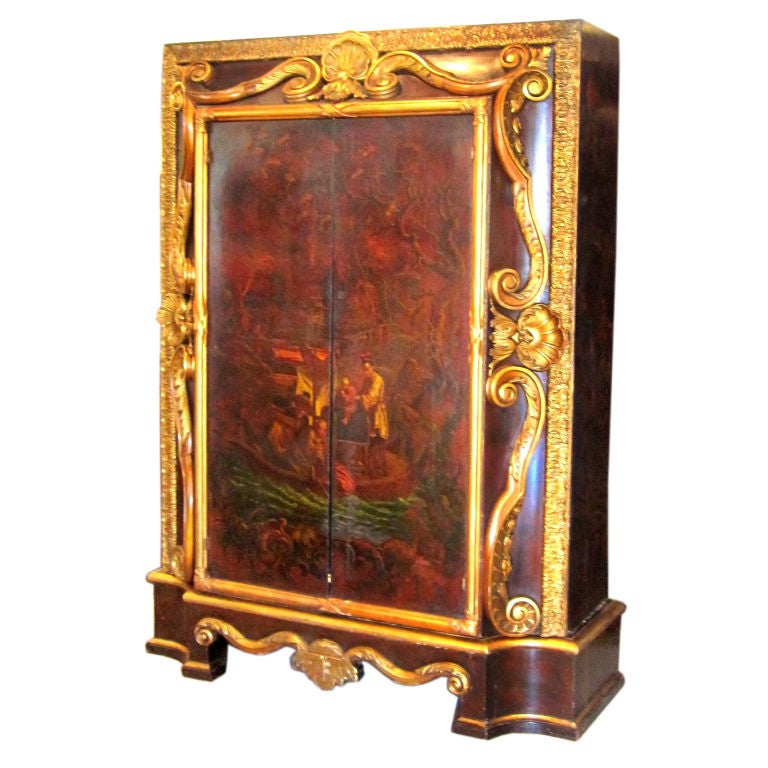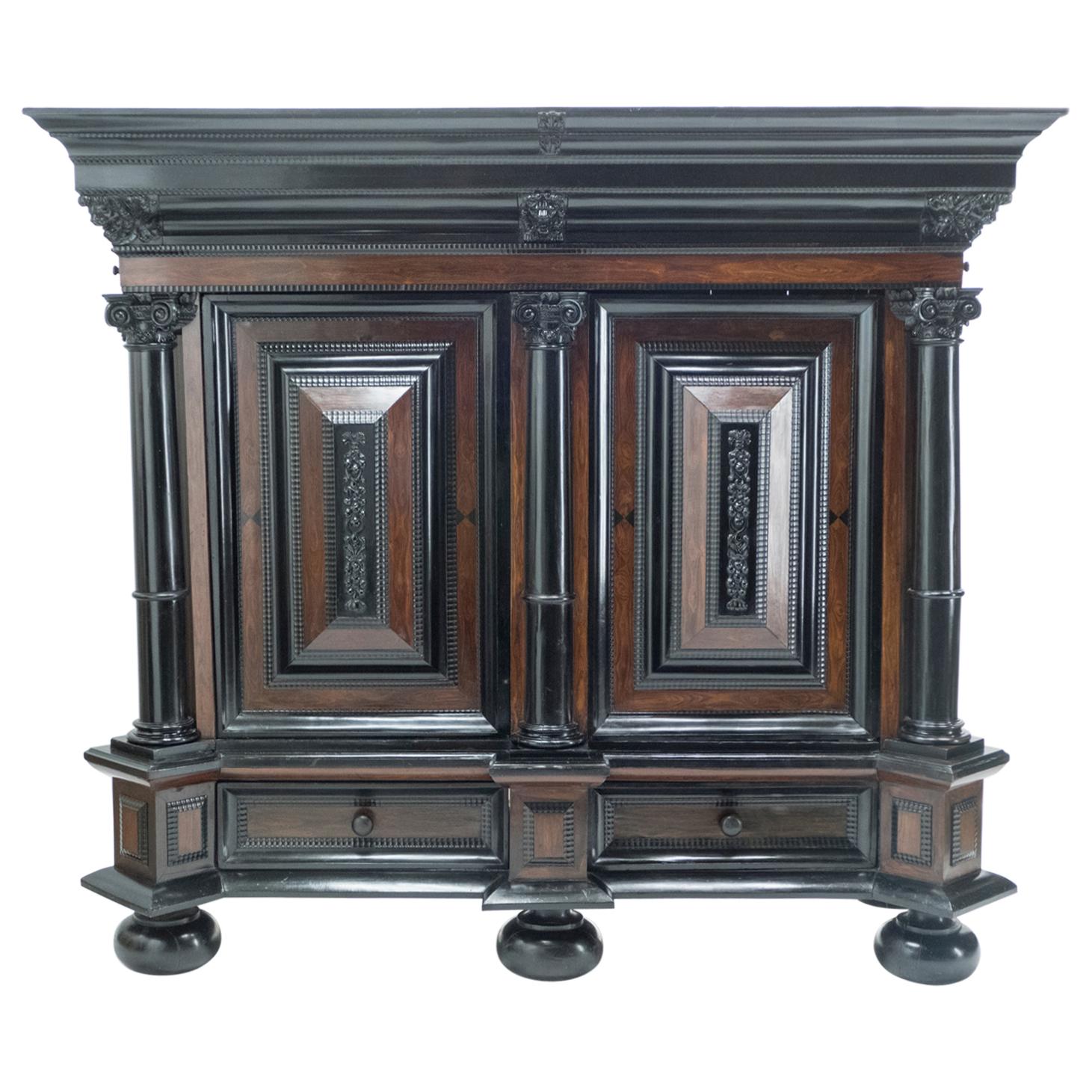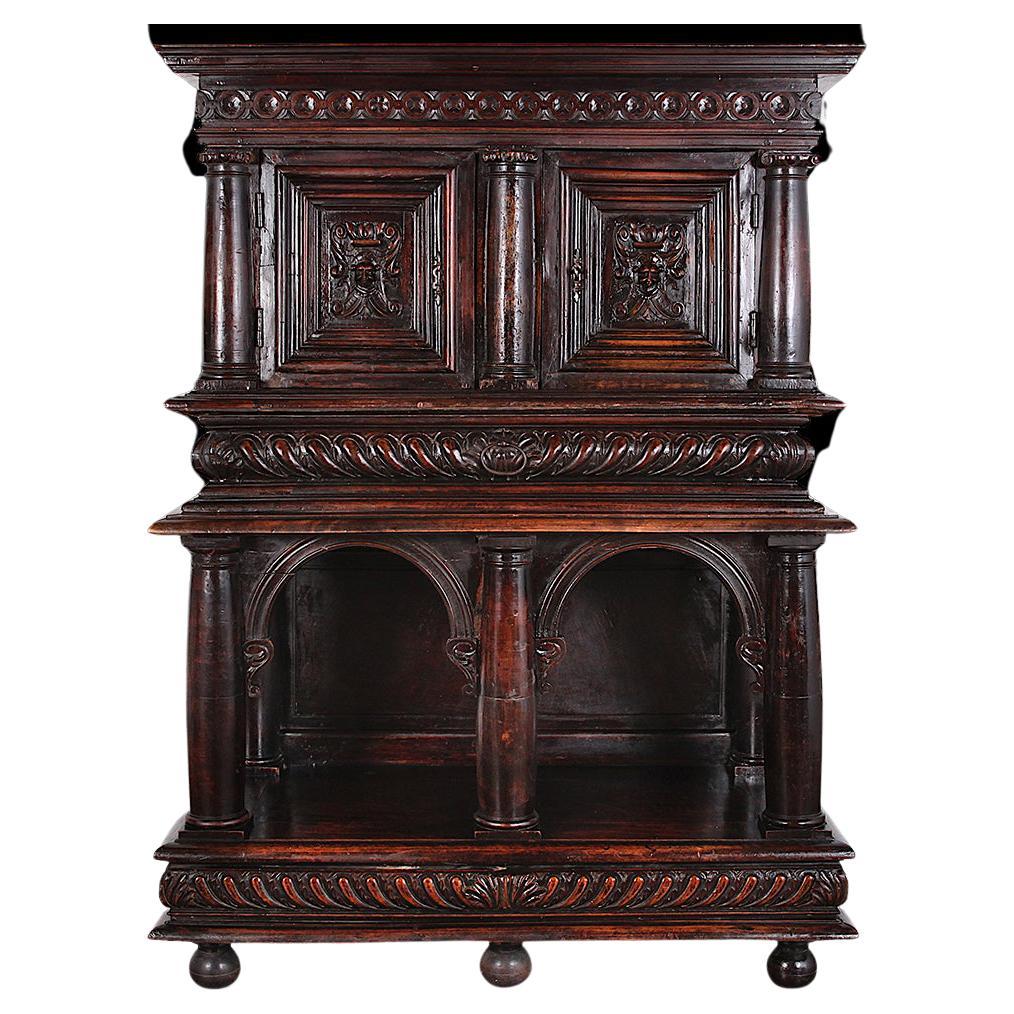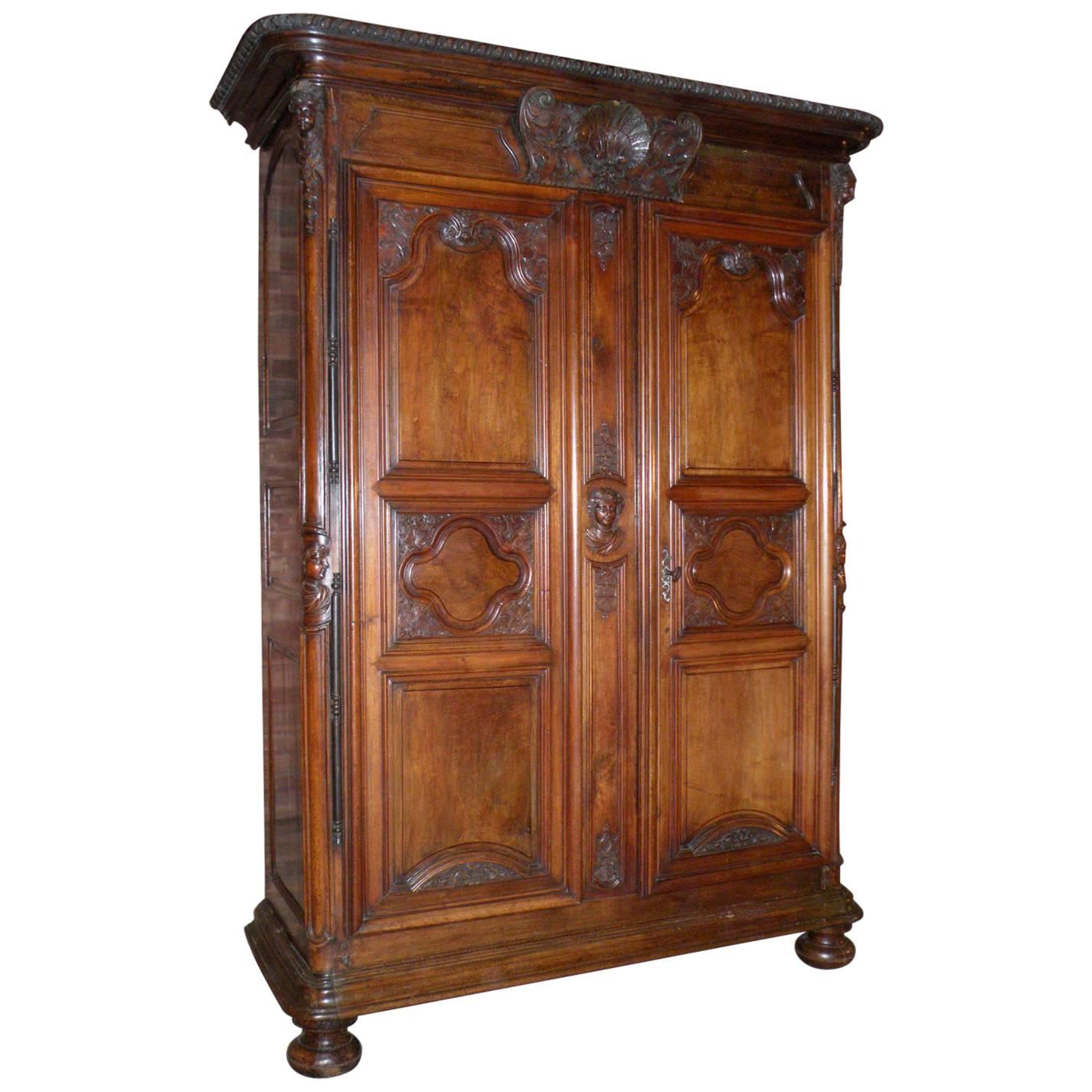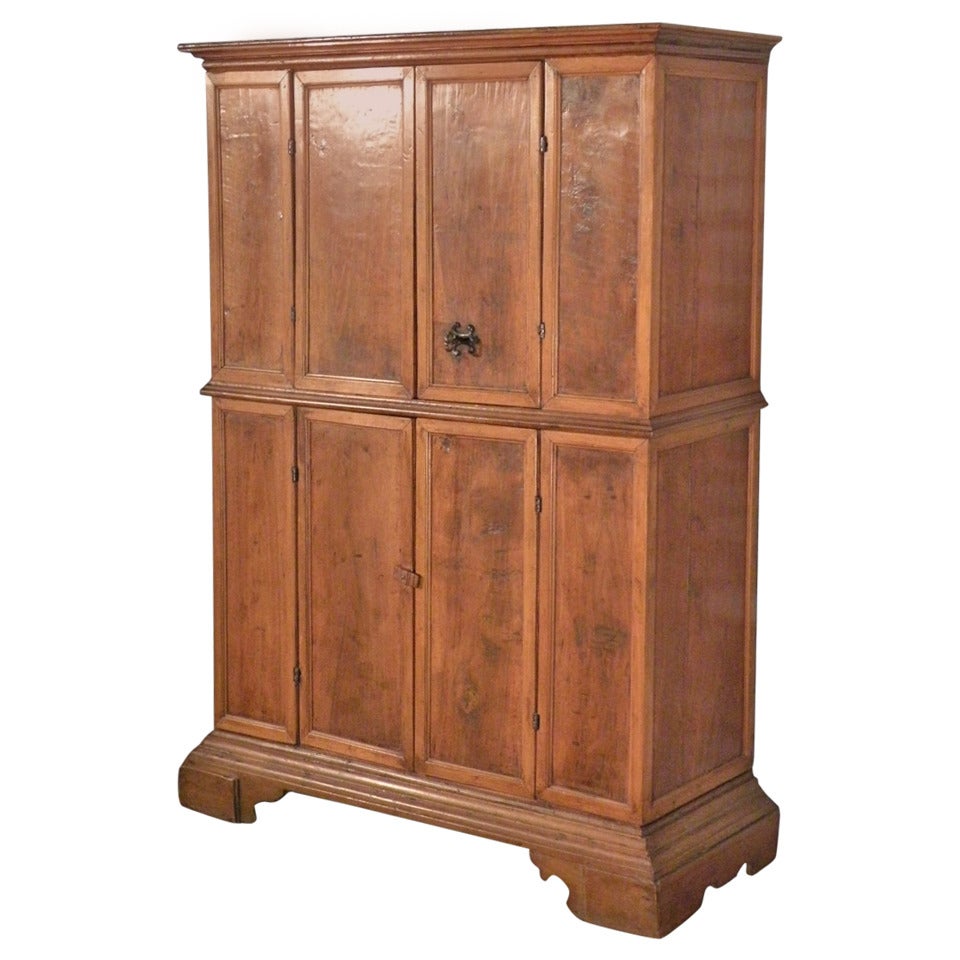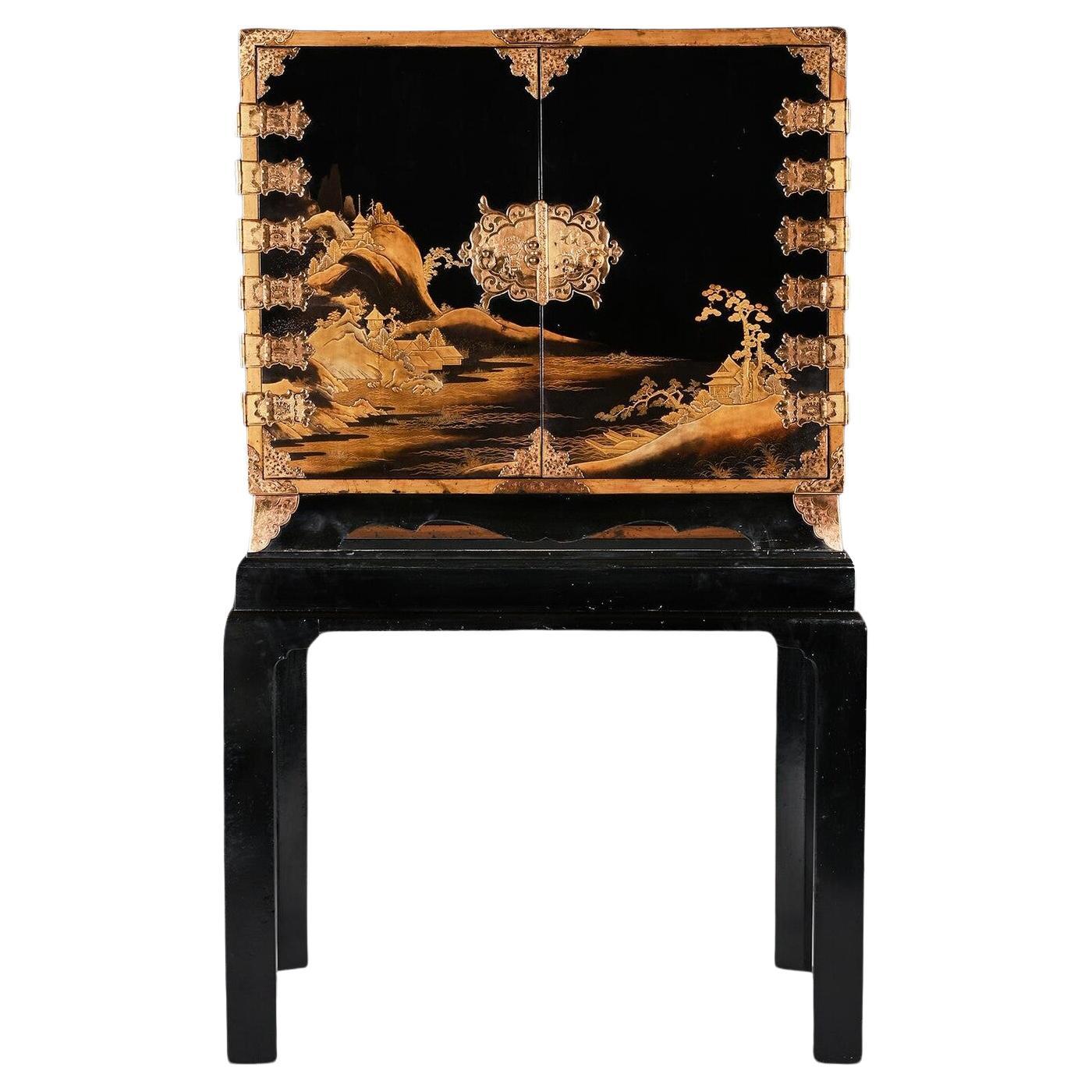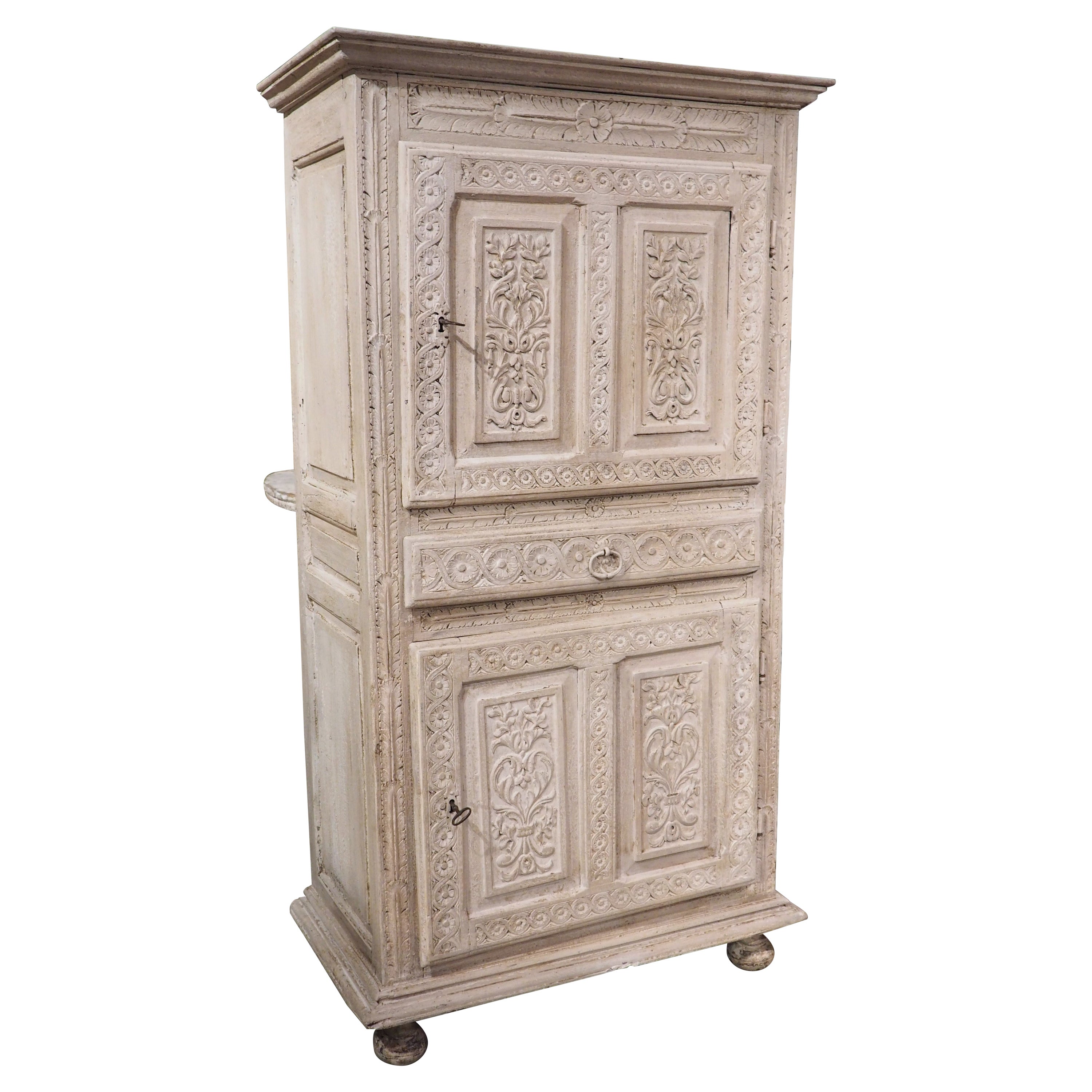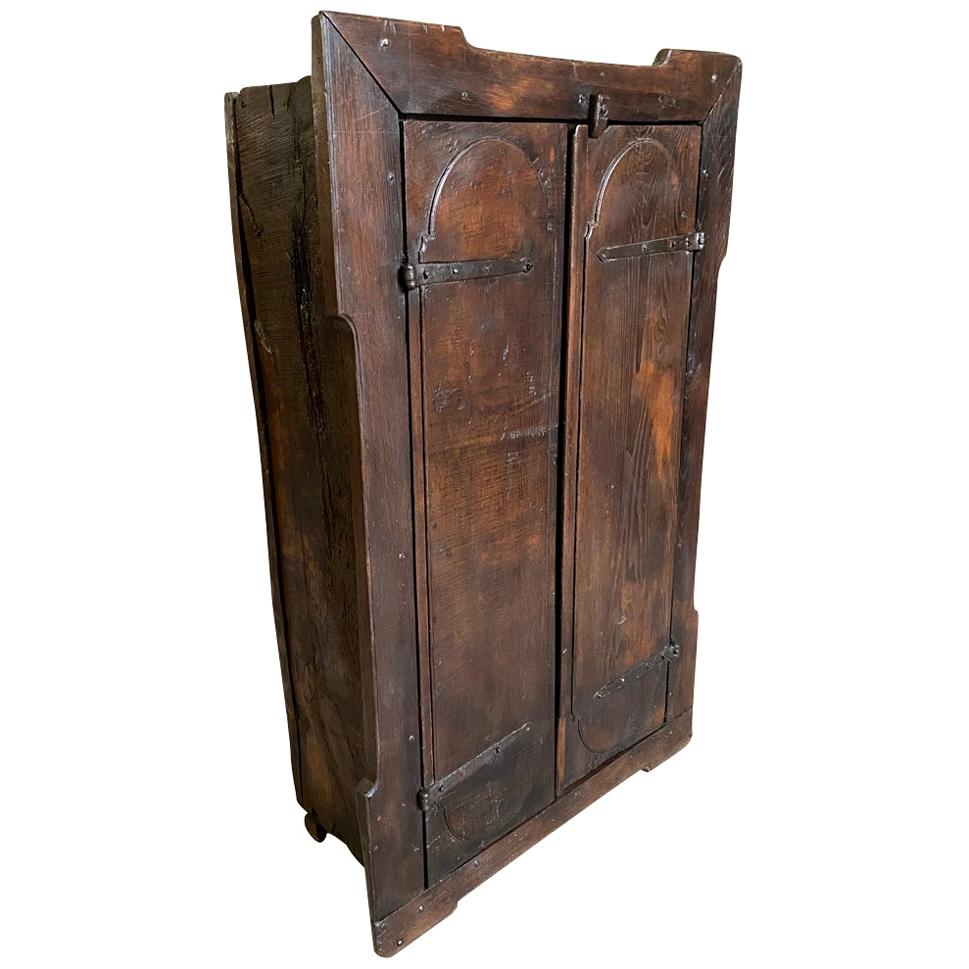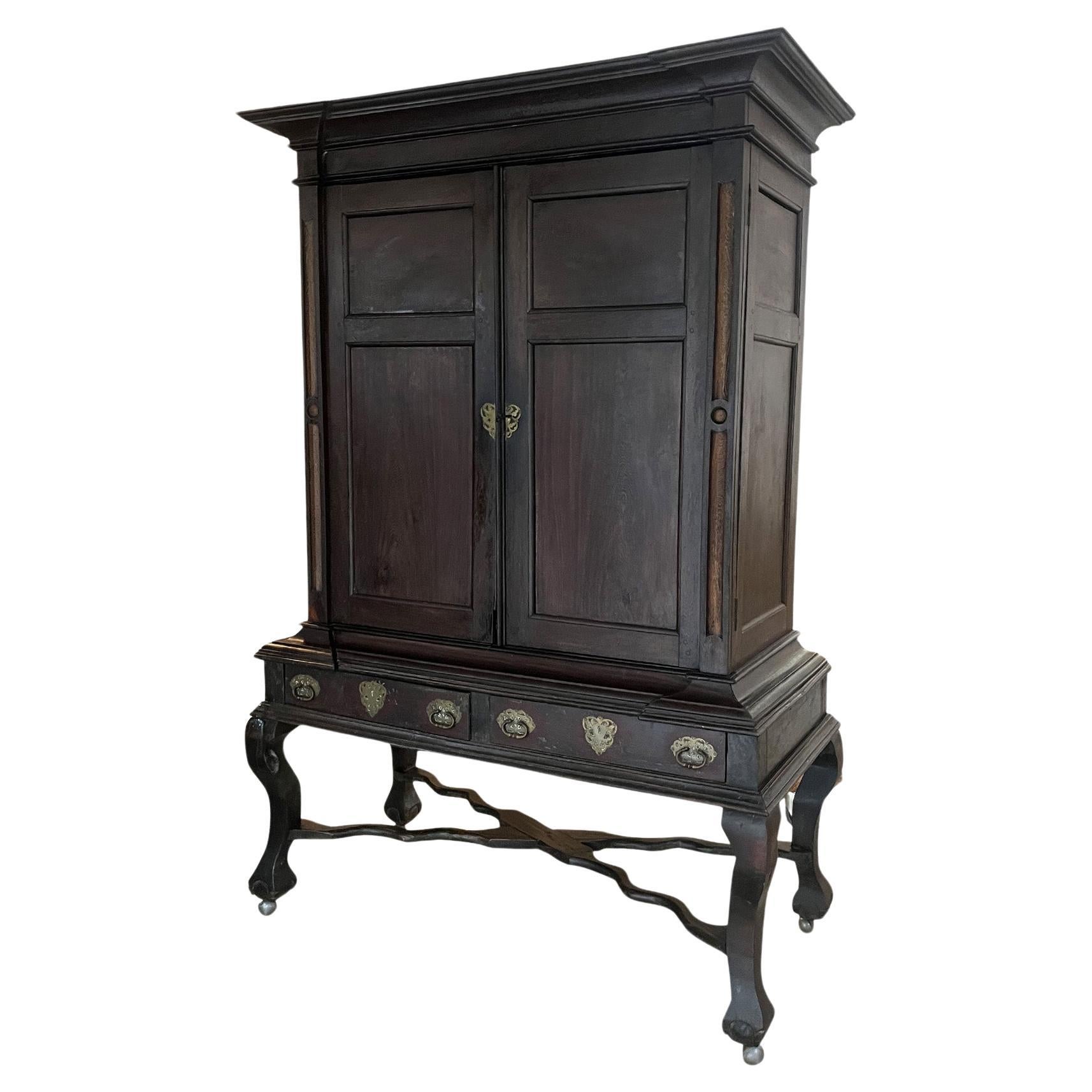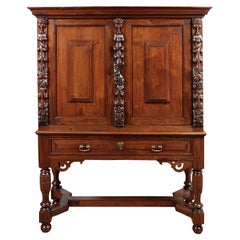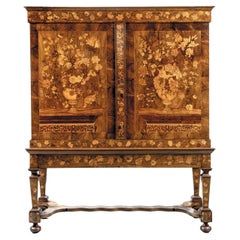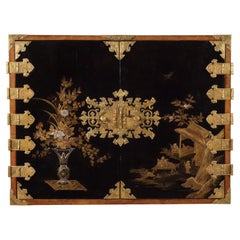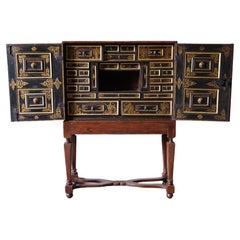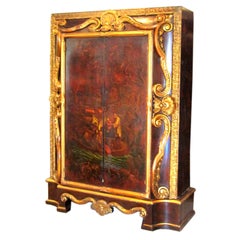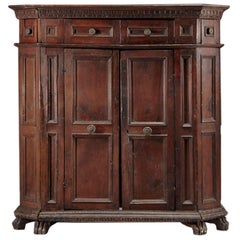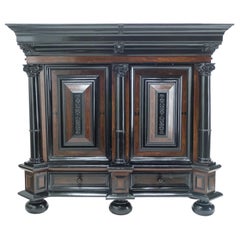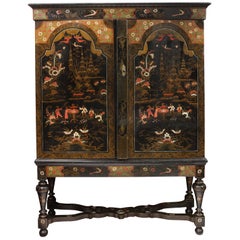
Unique Dutch Lacquer Chinoiserie Cabinet on Stand, Late 17th Century
View Similar Items
Want more images or videos?
Request additional images or videos from the seller
1 of 10
Unique Dutch Lacquer Chinoiserie Cabinet on Stand, Late 17th Century
About the Item
- Dimensions:Height: 82.68 in (210 cm)Width: 70.87 in (180 cm)Depth: 23.63 in (60 cm)
- Style:Chinoiserie (Of the Period)
- Materials and Techniques:
- Place of Origin:
- Period:Late 17th Century
- Date of Manufacture:circa 1700
- Condition:Repaired: Panel doors had a break which were restored, minor losses have been filled in by a lacquer-restorer. The varnish has been threatened since it was faded. Wear consistent with age and use. In a very good condition, which is very rare for these fragile cabinets.
- Seller Location:Amsterdam, NL
- Reference Number:1stDibs: LU5458220844322
About the Seller
5.0
Recognized Seller
These prestigious sellers are industry leaders and represent the highest echelon for item quality and design.
Established in 1985
1stDibs seller since 2020
23 sales on 1stDibs
Authenticity Guarantee
In the unlikely event there’s an issue with an item’s authenticity, contact us within 1 year for a full refund. DetailsMoney-Back Guarantee
If your item is not as described, is damaged in transit, or does not arrive, contact us within 7 days for a full refund. Details24-Hour Cancellation
You have a 24-hour grace period in which to reconsider your purchase, with no questions asked.Vetted Professional Sellers
Our world-class sellers must adhere to strict standards for service and quality, maintaining the integrity of our listings.Price-Match Guarantee
If you find that a seller listed the same item for a lower price elsewhere, we’ll match it.Trusted Global Delivery
Our best-in-class carrier network provides specialized shipping options worldwide, including custom delivery.More From This Seller
View All17th Century Dutch-Colonial Indonesian Sono Keeling Foliate Cabinet on Stand
Located in Amsterdam, NL
An Indonesian Sono keeling or Javanese rosewood foliate cabinet on stand or Rankenkast
Jakarta (Batavia), late 17th century
Measures: H 173 x W 133 x D 51 cm
The front of this cabinet is decorated with three carved swags of fruits and flowers coming out of cherub’s heads, a long drawer under two doors and two shelves behind the doors.
Usually, this type cabinet...
Category
Antique Late 17th Century Sri Lankan Dutch Colonial Cabinets
Materials
Rosewood
Highly Important Dutch Floral Marquetry Cabinet by Jan van Mekeren, circa 1700
By Jan van Mekeren
Located in Amsterdam, NL
The Van Mekeren cabinet:
A Newly Discovered Pinnacle by the Master of Marquetry
The highly important Dutch marquetry Van Mekeren cabinet
Amsterdam, circa 1700, by Jan van Mekeren...
Category
Antique Late 17th Century Dutch Cabinets
Materials
Wood, Hardwood, Fruitwood, Kingwood, Nutwood, Oak, Pearwood, Tulipwood
Price Upon Request
Free Shipping
Extremely Fine and Rare 17th-Century Japanese Export Lacquer and Inlaid Cabinet
Located in Amsterdam, NL
An extremely fine and important Japanese lacquer cabinet with gilt-copper mounts for the European market
Edo period, late 17th century
The pictorial style decorated rectangular...
Category
Antique Late 17th Century Japanese Lacquer
Materials
Brass
Price Upon Request
Free Shipping
Islamic Indonesian Djati Wood Display Cabinet, circa 1917
Located in Amsterdam, NL
An Indonesian Djati display cabinet
Chinese furniture-makers working in Batavia, late 18th century, dated 1799
Measures: H. 201.5 x W. 120 x D. 53.5 cm
In the middle of the ...
Category
Early 20th Century Indonesian Dutch Colonial Cabinets
Materials
Teak
17th Century Japanese Export Lacquer Cabinet with Depiction the Dutch Tradepost
Located in Amsterdam, NL
A highly important Japanese export lacquer cabinet with depiction of the Dutch East India Company tradepost Deshima and the annual Dutch delegation on its way to the Shogun in Edo
Edo period, circa 1660-1680
H. 88 x W. 100.5 x D. 54 cm
This cabinet includes a later European japanned stand, but also a modern powder-coated steel frame.
The latter can be designed and added to your specific needs.
The sides and front of the rectangular two-door cabinet are embellished in gold and silver hiramaki-e and takamaki-e on a black roiro lacquer ground with a continuous design. The two doors depict a long procession of numerous figures travelling on foot and horseback along buildings and a pagoda into a mountainous landscape. This is the annual court journey, Hofreis, of the Dutch from Nagasaki to the Shogun’s court in Edo. Three horseback riders are dressed as Dutch merchants and a fourth figure, probably het Opperhoofd, is seen inside a palanquin, norimon. Just about to cross the bridge, two men are carrying a cabinet like the present one.
Many Japanese figures on either side of the procession are engaged in various activities; some play musical instruments on board of small boats, others are fishing; figures inside buildings are depicted playing go, and farmers are tending to their rice paddocks. The upper part of the right door shows a large mansion, probably the local daimyo’s castle, with men kneeling before a man in the central courtyard.
The court journey fits in with the foreign policy of the shogunate which accorded a role to the VOC alongside China, Korea, and the Ryukyu Islands who also had to pay tribute. However, the VOC employees were traders, having low status in Japan’s social hierarchy, and they were received with less deference than were the state embassies from Korea and the Ryukyu Islands. Nevertheless, the contacts with the Dutch were a welcome source of information to the Shogun about Europe and European science and technology.
The left side of the cabinet depicts, in mirror image, a rare view of the artificial fan-shaped Deshima Island, the trading post for the Dutch in Japan. The island, where the Dutch flag flies, is surrounded by small Japanese boats and an anchored three-masted fluyt (cargo ship), flying Dutch flags, with on the stern the VOC monogram. On the bottom right a busy street of Nagasaki is shown, bordered by shops and leading up to the stone bridge. On the island the trees are beautifully painted, two cows can be seen, and the flagpole, all in very fine detail. Dutchmen and enslaved Malay are visible outside the buildings and two Japanese figures, probably guards, sit in a small hut in the centre.
A maximum of fifteen to twenty Dutchmen lived on the island at any time and soldiers or women were not allowed. Restrictions on Deshima were tight, and the merchants were only allowed to leave the island by special permission. The Opperhoofd had to be replaced every year, and each new Opperhoofd had to make a court journey to pay tribute, present gifts, and to obtain permission to Margaret Barclay eep on trading. In the distance, many birds fly above the hills and a four-story pagoda can be seen. The right side of the cabinet is painted with other horse riders and their retinue journeying through mountains.
The pair of doors to the front open to reveal ten rectangular drawers. The drawers are decorated with scenes of birds in flight and landscapes with trees and plants. The reverse of the left door with two thatched buildings, one with a ladder, underneath a camelia tree with large blooms; the right door with a three-story pagoda nestled among trees and both doors with a flying phoenix, ho-oo bird. The cabinet, with elaborately engraved gilt copper mounts, hinges, lock plates and brass handles, is raised on an 18th-century English japanned wood stand.
A pair of large cabinets...
Category
Antique 17th Century Japanese Edo Lacquer
Materials
Copper, Gold
$1,454,317
Free Shipping
Magificent Dutch 'Daniel Marot' Baroque Walnut Burr Cabinet on Stand, circa 1720
By Daniel Marot
Located in Amsterdam, NL
The Marot cabinet
A Magnificent Walnut Burr Cabinet on stand or 'kruisvoetkabinet' in the style of Daniel Marot
Circa 1720, probably made for George Clifford III in Amsterdam or the Hague
The cabinet is one of the rarest examples of a so-called Kruisvoetkabinet, which is translated to Cabinet on stand. The cabinet is raised on a stand with eight legs and tree drawers. Below the drawers and on the sides are five carved ornaments. The hollow formed corners are mounted with carved ornaments too. The upper part of the cabinet has two doors decorated with panels and on each door two carved ornaments in Marot style. The cabinet has a double dome top.The interior of the cabinet has tree shelves and five drawers. The brass fittings and handles are original and finished with gilt lacquer. The cabinet is made of oak and veneered with burr walnut. The carvings, turned parts and the ball feet are made of solid walnut.
This cabinet is a unique piece of Dutch furniture. Cabinets on stand became popular in the third quarter of the 17th century and were made until the second quarter of the 18th century. Most of the dutch cabinets on stand...
Category
Antique Early 18th Century Dutch Louis XIV Cabinets
Materials
Oak, Walnut
$91,123
Free Shipping
You May Also Like
Late-17th Century, Dutch Oak Cabinet on Stand
Located in London, GB
Dutch oak cabinet on stand
An exceptional late 17th-century Dutch oak cabinet-on-stand with an ornately carved interior, depicted in the Baroque man...
Category
Antique Late 17th Century Dutch Baroque Cabinets
Materials
Metal
17th Century Jean Baptiste Pillement Style Chinoiserie Armoire
Located in Miami, FL
Extremely rare Jean Baptiste Pillement style, late 17th century-turn of the 18th century, Armoire on base. Chinoiserie decor on the doors and s...
Category
Antique Early 18th Century French Wardrobes and Armoires
Italian early 17th century Baroque armadio / Cabinet
Located in Troy, NY
Striking Tuscan cabinet with canted corners. Four drawers above two doors, on later paw-feet (can be taken off).
Beautiful rich color.
Our pieces are left in lived-in condition, pe...
Category
Antique 17th Century Italian Baroque Wardrobes and Armoires
Materials
Walnut
Dutch 17th Century Rosewood Ebony Baroque Cupboard Kussenkast, 1670
Located in Paris, IDF
This is a unique and monumental Dutch Baroque cupboard called “Kussenkast" from the late 17th century, probably circa 1670-1680. Made of rosewoo...
Category
Antique 17th Century Dutch Baroque Wardrobes and Armoires
Materials
Ebony, Rosewood
Late 17th Century French Louis Monumental XIV Walnut Armoire
Located in Troy, NY
Very large Louis XIV Armoire of extraordinary quality and size. The two massive doors featuring a beautiful, intricate steel locking mechanism. The lower part fitted with drawers, th...
Category
Antique 17th Century French Louis XIV Wardrobes and Armoires
Materials
Walnut
French 17th Century and Later Cabinet on Stand
Located in Vancouver, British Columbia
An ornately-carved walnut 17th century and later French cabinet on stand, the top with a pair of carved doors and paneled carved sides with co...
Category
Antique 17th Century French Renaissance Cabinets
Materials
Walnut
Recently Viewed
View AllMore Ways To Browse
Green Japanese Cabinet
Japanese Lacquer Cabinet On Stand
17th Century Japanned Cabinet
Blue Chinoiserie Cabinet
Japanned Cabinet 17th
Black Cabinet With Flowers And Birds
Pair Cupboards
Mirrored Display Cabinets
English Display Cabinet
Expensive Antique Furniture
Plant Cabinet
Small Pattern Cabinet
Locking Display Case
2 Door Glass Cabinet With Doors
Cabinet Painted House
Chinese Two Door Cabinet
File Cabinets
Antique Brass Door Pulls
